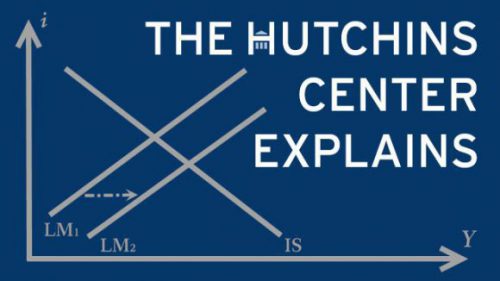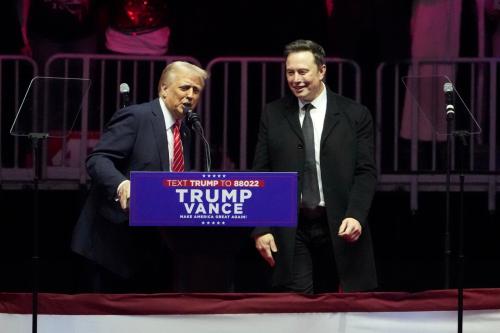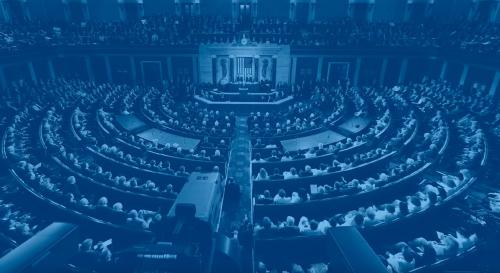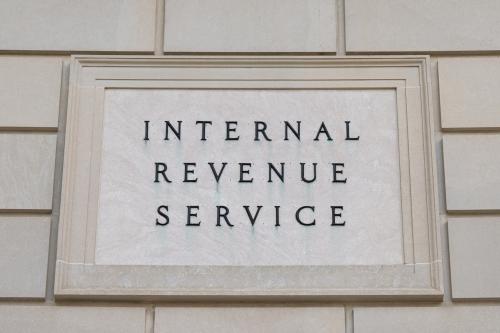The federal government last year spent $6.8 trillion, of which $4.1 trillion was mandatory spending (e.g., Social Security and Medicare), $1.8 trillion was annually appropriated discretionary spending, and $900 billion was interest. In addition, the United States also effectively spends $1.8 trillion in targeted tax breaks, known as “tax expenditures.”
Over the past several decades, public concern about inadequate oversight has morphed into deep skepticism. Americans’ faith in government has declined and today sits near record lows. This contributed to the Trump administration’s creation of the Department of Government Efficiency (DOGE), which despite the name is not a government department. In his justification of DOGE in an address to Congress, President Trump characterized 19 federal programs as “scams” and “appalling waste,” noted “shocking levels of incompetence and probable fraud in the Social Security program,” and boasted that DOGE has already identified “hundreds of billions of dollars of fraud.” On the whole, the president’s remarks suggest that government spending is subject to insufficient oversight, resulting in vast fraud and waste. Such a characterization, however, fails to acknowledge the federal government’s multiple layers of oversight, as we describe in this explainer.
What is Congress’ oversight role as it decides how to spend federal funds?
Oversight begins with the annual budget process. Federal agencies submit budget requests to the White House Office of Management and Budget (OMB). OMB staff evaluate these requests before sending the president’s budget to Congress.1 Once the president’s budget request is in the hands of legislators, Congress initiates the appropriations process, the primary means through which discretionary spending is evaluated and monitored. In both houses, this process is overseen by appropriations committees comprised of 12 subcommittees, each dedicated to specific focus areas so to cultivate policymaker and staff expertise. Discretionary spending usually gets the most scrutiny, as annual spending bills are written after congressional appropriators hold hearings at which administration officials and other experts field questions about various proposed spending programs.
In most years, mandatory spending typically receives less scrutiny as Social Security and Medicare, for instance, do not need to be renewed or reviewed annually. But some mandatory programs such as the National Flood Insurance Program and the Supplementary Nutrition Assistance Program (formerly known as food stamps) require annual appropriations, as well as periodic reauthorization.
Social Security and Medicare each have offices that perform oversight functions. For example, the Social Security Administration and the Department and Health and Human Services (HHS)—which administers Medicare—both have an Office of the Inspector General (OIG), an oversight division present in many federal agencies responsible for rooting out fraud and waste. For example, an investigation by the HHS OIG into the Cigna Group, a health insurance company, found that Cigna was attributing severe conditions to its patients that were not supported by their underlying medical records in order to receive inflated payments—leading to a $172 million settlement in 2023, as well as increased scrutiny on Cigna. Inspectors general are discussed in greater detail below.
While not formal oversight, the major entitlement programs also have divisions that evaluate their performance to improve efficiency. For example, the Centers for Medicare & Medicaid Services (CMS) have an Innovation Center responsible for developing improved payment models and strategies for delivering care to patients. The CMS Innovation Center has tested more than 50 new models of care delivery since 2013, and in 2023 launched a Transformation Initiative to speed reforms. For its part, the Social Security Administration conducts internal research through its Office of Research, Evaluation, and Statistics, as well as funding research by external scholars.
After Congress decides how taxpayer funds will get spent, are there tools for tracking waste and abuse?
While appropriations committees oversee spending, other committees—such as the House Committee on Oversight and Government Reform and the Senate Committee on Homeland Security and Governmental Affairs—also have an oversight role. Both committees have launched investigations and introduced reforms, often following volatile episodes in American history. For example, the Senate committee was responsible for legislation to uncover conflicts of interest following the Watergate scandal. Another example of a reform introduced by the Senate committee was the 2016 MEGABYTE Act, which improved software management at federal agencies. The law saved taxpayers $450 million from fiscal years 2017 to 2019.
Congressional oversight has its shortcomings. A 2023 report by Brookings’ scholar Molly Reynolds examining congressional oversight activity from 2019 to 2022 found that committees are less aggressive in their oversight of the executive branch when the legislative branch is controlled by the president’s party. Furthermore, research by two University of Southern California political scientists showed that more ideologically extreme legislators participate in oversight hearings more than moderate legislators. Despite these concerns, there is evidence that congressional oversight is effective. A study by political scientists at the University of California, San Diego found that congressional hearings lead to a lower rate of improper payment—though the effect is small in comparison to the overall problem. As it stands, empirical research on the efficacy of congressional oversight is limited.
Congress receives oversight assistance from the Government Accountability Office (GAO), a legislative branch agency headed by the U.S. Comptroller General, who is appointed by the president subject to Senate confirmation. With around 3,000 employees, the GAO is tasked with conducting financial audits of government agencies, developing policy analyses, evaluating program effectiveness, and even investigating criminal and civil misconduct. According to GAO’s own estimates, it helped the government to save $67.5 billion in fiscal year 2024. For instance, the GAO discouraged the Department of Defense from developing redundant missile defense satellites (saving $3.8 billion) and motivated the Department of Energy to pause work on a nuclear waste facility in Washington state that has been under construction for 20 years (saving $6.0 billion). The GAO’s anonymous FraudNet hotline processed 4,044 allegations of fraud, waste, abuse, or mismanagement of federal funds in fiscal year 2023 (the latest year for which a report is available), around half of which were referred for further investigation.
While there do not appear to be credible estimates of aggregate waste and fraud, GAO estimated that improper payments totaled $162 billion in fiscal year 2024, primarily from overpayments, but also underpayments, technically improper payments (otherwise justified payments where the payment did not follow proper procedures), and unknown payments (payments that could not classified as proper or improper). While seemingly high, GAO’s $135 billion overpayment estimate comprised less than 2% of total government expenditures.
What oversight responsibilities do federal agencies have?
For more than 50 years, inspectors general (IGs, who are given a broad mandate to conduct audits and to investigate waste or fraud) have been the primary vehicle for intra-agency oversight.2 More than 70 departments and agencies have IG offices, though some IG positions are currently vacant. The Federal Reserve has an Inspector General.3 The effectiveness of IGs is subject to debate, in part as a result of the inconsistent metrics by which IGs report their “returns-on-investment” to Congress. A 2015 Brookings report calculating the return on investment of 19 OIGs throughout the federal government from 2010 to 2014 concluded that 16 had a positive return on investment, with a median return on investment of more than $6 per $1 spent across all 19 agencies. Some departments, such as the Department of Veterans Affairs and the Social Security Administration, had a return of more than $35 per dollar spent. But some longtime observers suggest that the fixation on monetary savings may incentivize OIGs to focus on shorter-term projects that are easily measured, ignoring more complicated or less easily quantifiable issues.
In 2018, Congress created evaluation officers at 24 executive agencies, including the National Science Foundation and the Department of the Treasury. Unlike IGs, who are often accountants or investigators, evaluation officers are meant to be experienced career agency employees who are less concerned with spending issues and operational efficiency than with the coverage, effectiveness, and quality of an agency’s policy analyses and program evaluations.
Congress occasionally creates oversight entities for specific purposes. In the American Recovery and Reinvestment Act (ARRA) of 2009, Congress created the Recovery Act Transparency Board to reduce waste and fraud and increase transparency. While ARRA reflected the Obama administration’s priorities of improved accountability in government, some scholars argue the act merely extended or recombined existing oversight tools. In the Coronavirus Aid, Relief, and Economic Security (CARES) Act of 2020, Congress created a Pandemic Response Accountability Committee to oversee the more than $5 trillion that federal government spent in response to the pandemic. Congress also created a special inspector general for the Troubled Asset Relief Program created after the 2008 financial crisis to shore up the nation’s banks.
The Trump administration has weakened some of these oversight functions. For example, a few days into his second term, President Trump fired 17 IGs covering 18 agencies and departments, including the Departments of Defense, Commerce, Labor, and the Treasury. These IGs have yet to be replaced, and several of the fired IGS have sounded the alarm about the “chilling effect” of firing oversight officials, arguing that it could lead to other officials self-censoring and choosing not to pursue investigations that might be controversial. Eight of the fired IGs have sued the administration, alleging that the manner of their firing violated federal law.
Are tax expenditures subject to the same level of oversight as appropriations and mandatory spending?
The $1.8 trillion tax expenditure budget is generally subject to much less oversight than either appropriations or mandatory spending. Tax expenditures are effectively managed by the Internal Revenue Service (IRS), which focuses on examination, audit, and taxpayer service to ensure compliance with tax laws. Dedicated IRS staff for individual tax expenditure programs is limited, and analysis is primarily derived from the agency’s major compliance efforts rather than broader spending effectiveness. The Treasury does have an (acting) Inspector General for Tax Administration, responsible for overseeing the IRS, including evaluating the IRS’ use of the additional funding it received from the Inflation Reduction Act, some of which has since been scaled back.
Unlike appropriations, many tax expenditures continue indefinitely unless they expire, with roughly 90% of the tax expenditure budget set to autopilot. The remaining 10% of tax expenditures that periodically expire—known as “tax extenders”—are routinely extended and are rarely the focus of congressional oversight activities. During tax reform considerations, however, Congress may increase the frequency of hearings on various aspects of the tax code, including specific tax expenditures.
The Joint Committee on Taxation (JCT) and the Treasury Department analyze tax expenditures and release reports on their fiscal costs and distributional impacts. The JCT’s reports cover various tax expenditure topics, such as distribution by income class, historical trends, and on occasion specific sectors like health care. Similarly, the Treasury publishes estimates of tax expenditure costs in the OMB’s Analytical Perspectives volume, providing framing information but lacking specific evaluations. There is no dedicated inspector general for tax expenditures. In sum, oversight for tax expenditures is extremely limited relative to other classes of federal budgets.
What’s the main takeaway: Is there substantial oversight for federal spending?
In general, yes. Between the annual appropriations process, periodic reauthorization of mandatory programs, congressional audit resources like the GAO, intra-agency oversight through IGs and chief evaluation officers, and specialized oversight entities for major programs like the CARES Act, the bulk of federal spending is subject to multiple layers of oversight. The one major exception is the federal tax expenditure budget, in which provisions can continue for decades without meaningful formal oversight. Still, estimates by the GAO and others suggest fraud and waste remain a governance concern.
-
Footnotes
- Included in the appendix of the president’s budget request are supplementary materials provided by agencies such as records of programs’ expenses, sources of funding and budgetary authority, and descriptions of purchased goods and services. The appendix also contains narrative statements relating program performance. Separate from, but synchronized with, the president’s budget submission, each executive agency is also required to submit an Agency Strategic Plan and Agency Performance Plan to Congress—every four years in the case of the former, coinciding with the beginning of the second year of each presidential term. These documents describe an agency’s current policy objectives and set measurable goals for the coming year, respectively.
- IGs have existed since the late 1950s but were only statutorily required following the Inspector General Act of 1978.
- All parts of the Federal Reserve (The Fed) system, including the Board of Governors and the 12 Federal Reserve Banks, are regularly audited. For example, the Board’s financial statements and its regulatory compliance are annually reviewed by an external auditor, often a major accounting firm. This auditor is hired by the Fed’s Office of the Inspector General.
The Brookings Institution is committed to quality, independence, and impact.
We are supported by a diverse array of funders. In line with our values and policies, each Brookings publication represents the sole views of its author(s).








Commentary
Is federal spending subject to meaningful oversight?
April 30, 2025